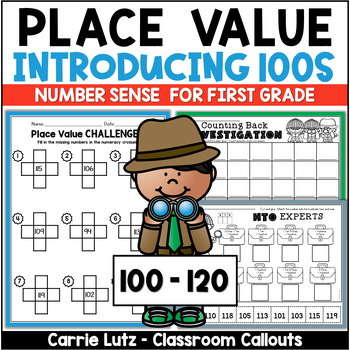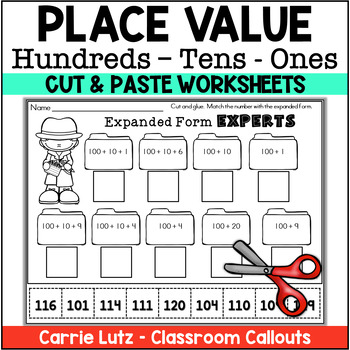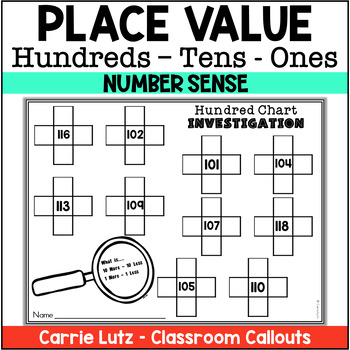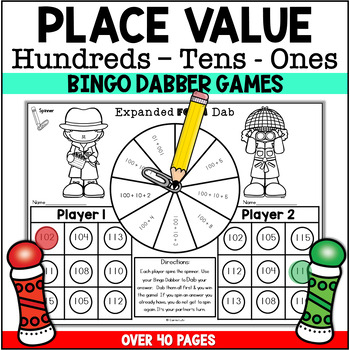Place Value Worksheets 100 to 120 – Hundreds Tens & Ones
- Zip
What educators are saying
Description
Are your first grade students struggling once you begin working on numbers over one hundred in math? Do you have trouble finding resources that cover just the numbers 100 to 120? This product works with place value and base ten blocks with numbers 100 - 120. These worksheets and activities including Bingo Daubers, help when introducing the hundreds place.
This product is very quick and easy to use. It offers differentiation and supplements your independent math center. It can be used as a whole group, small group, assessment or a reteaching tool. It also offers hands-on practice reading, writing, and recognizing numbers from 100 - 120.
Here’s what’s included:
• 4 Place Value Posters (in color to show the value of each base ten block)
• 120 Charts with 100 – 120 shaded for easier recognition. (filled and blank)
• Base Ten cards Math Center 100 – 120
• Place Value Chart cards Math Center 100 – 120
• Number Cards Math Center 100 – 120 (the above 3 can be used together)
40 Practice Pages to practice their place value skills:
- Base Ten
- Hundreds, Tens and Ones
- Expanded Form
- Greater Than, Less Than, Equal To
- Count Back
- One More/One Less, Ten More/Ten Less
- Ordering Numbers .. Least to Greatest, etc.
- Place Value Chart Recognition
- 4 Bingo Dabber Games with Similar Skills
Also Included:
- 20 Challenging Pages with Answer Keys
- 120 Chart 100 to 120 Chunk Only
- Comparing and Ordering from 100 - 120
- Ten More and Ten Less from 100 - 120
- Greatest to Least / Least to Greatest 100 to 120
- Expanded Form 100 - 120
Check out the preview for a better look at what's included.
Copyright © Carrie Lutz Classroom Callouts
All rights reserved by author.
Permission to copy for single classroom use only.
You May Also Like:
STORY PROBLEMS USING NUMBER BONDS
Winter Math Review ~ Over 30 Pages of Math Fun
Let’s Connect!
If you would like to get updates on NEW and CURRENT resources...
► SIGN UP to receive weekly freebies by Email!
► FOLLOW me on Teachers Pay Teachers!





